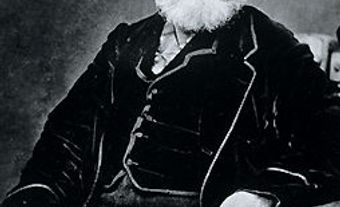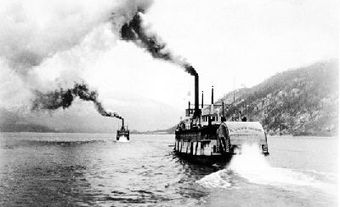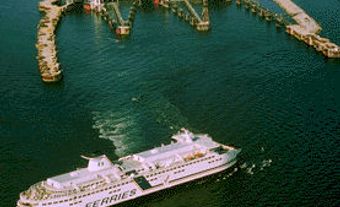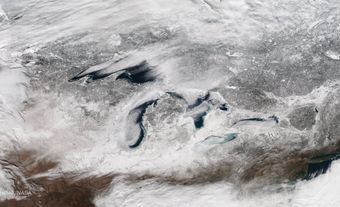Ships of this size can carry one million bushels of wheat on a single voyage (27 000 tonnes). Wheat and other feed grains account for about 40% of all cargoes carried by Canadian lake carriers, followed by coal, iron ore and limestone. The annual 9-month shipping season of the lake carriers does not include the winter months of late December to early March, when the seaway is closed and ice covers much of the Great Lakes.
The modern Canadian lake carrier is the result of more than 100 years of continually changing Great Lakes ship design and modification (see SHIPBUILDING AND SHIP REPAIR). Earlier types of cargo carriers on the Great Lakes, all of them built for the bulk transit of goods, included the exotically named hermaphrodite barquentines of the age of sail and the whalebacks and canalers of the age of mechanical propulsion.
As becomes the name "hermaphrodite," which means having 2 opposite qualities, this class of sailing ship had 2 masts, with square-rigged sails on the foremast for manoeuvring in and out of dock and in narrow passages, and fore-and-aft rigged sails on the mainmast for speed. Except for their tall funnels and awkward deck structures, the whalebacks of the age of coal-fired steam engines, squat and broad-beamed, looked like the modern nuclear submarine.
The whalebacks were also called "pig boats" because their bows ended in a steel snout built above the water line. The later canalers were designed to fit snugly into the narrow locks of the old WELLAND CANAL, linking Lakes Erie and Ontario and passing near St Catharines, and the canal system between Lk Ontario and MONTRÉAL which terminated at the Lachine Canal. The canaler was one-third the length of the John B. Aird. In 1959 canalers were replaced in the wider and longer locks of the St Lawrence Seaway system by upper lakers, which had previously been restricted to the upper lakes above Niagara because of their size. These locks can take ships up to 222.5 m in length and 23.2 m in breadth.
Some of these larger carriers, though designed primarily for the inland lakes, have been built for both the coastal trade and deep-sea service and are called ocean lakers. This is not entirely a new trend since some earlier lakers were requisitioned to serve on the N Atlantic during WWII, and a few of them were sunk by German U-BOATS.
The Great Lakes have been a graveyard for hundreds of ships, most of them lost during the age of sail between 1750 and 1870 in storms, fires and collisions. Despite their size, even modern lake carriers can be victims of severe ice conditions and storms. The tragic sinking on 10 Nov 1975 of the Edmund Fitzgerald, a 222 m long US iron-ore carrier, was commemorated in song by Gordon LIGHTFOOT. After battling 7.5 m waves and record 125 km/h winds on Lk Superior, the ship suddenly plunged to the bottom with the loss of the entire crew of 29, including her experienced captain.

 Share on Facebook
Share on Facebook Share on X
Share on X Share by Email
Share by Email Share on Google Classroom
Share on Google Classroom



